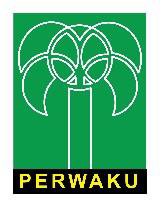Balancing infrastructure, ecosystem conservation, and community approaches on integrated development planning of Citarum Watershed
Abstract
The condition of several watersheds in Indonesia at this time has experienced a lot of decline in functions in maintaining water availability and environmental health. The number of critical watersheds in Indonesia continues to grow and is getting worse even though there have been many rehabilitation programmes for several watersheds in Indonesia, including the Citarum Watershed in West Java. Changes in the characteristics of the Citarum Watershed that can be seen include an increase in the overflow point of flood inundation, erosion of agricultural land, and sedimentation in rivers. The method used in this research is a qualitative approach through analysis based on a literature review of planning documents, regulations, books, journals, and expert judgment analysis. This study aims to assess the extent to which cross-sectoral, cross-regional and inter-disciplinary problems affect regional development and analyze problems that occur at the watershed scale. The Citarum Watershed Strategic Plan is a set of activities with steps to implement the planned strategies. The Strategic Plan reveals some activities, involvement of stakeholders, and also goals for the future which are to be achieved through the identified implementation steps. All of the activities have a main vision: "All stakeholders working together to enhance the quality of watershed carrying capacity by balancing infrastructure, ecosystem conservation, and community approaches".
Keywords
References
Andri, Y. & Aziz, Y.M.A. (2021). Environmental policy strategy for Citarum Harum Program in Bandung Regency (Strategi kebijakan lingkungan Program Citarum Harum di Kabupaten Bandung). Ministrate: Jurnal Birokrasi & Pemerintahan Daerah, 3(2), 29-39. doi:10.15575/jbpd.v3i2.13561
Asian Development Bank [ADB]. (2019). Indonesia: Integrated Citarum Water Resources Management Investment Program (Validation Report 2019). Reference Number: PVR-630 Project Numbers: 37049-013 and 37049-023.
Calder, I.R. (2005). Blue Revolution: Integrated Land and Water Resource Management. London, UK: Earthscan Publ.
Cumming, G.S. (2016). The relevance and resilience of protected areas in the Anthropocene. Journal Anthropocene, 13, 46-56.
Dixon J.A. (1992). Analysis and Management of Watersheds. In P. Dasgupta & K.G, Maler (Eds) The environment and emerging development issues (2nd vol.). Oxford, UK: Clarendon Press.
Djuangsih, N. (1993). Understanding the state of river basin management from an environmental toxicology perspective: an example from water pollution at Citarum river basin, West Java, Indonesia. Science of the Total Environment, 134, 283-292. doi:10.1016/s0048-9697(05)80029-4
Fridayani, H. D. (2020). The Government's role in facing SDGs 2030 Citarum River Clean-up Program, Indonesia: An analysis. Journal of Governance and Public Policy, 7(1), 41-50. doi: https://doi.org/10.18196/jgpp.71120
Government of Indonesia [GoI]. (2003). The West Java Annual State of the Environment Report. Bandung, Indonesia: West Java Local Government.
Government of Indonesia [GoI]. (2010). West Java Local Government Regulation Number 22/2010: Spatial Planning of West Java Province, Indonesia 2009 -2029. Bandung: Indonesia: West Java Local Government.
Government of Indonesia [GoI]. (2014). Indonesia Minister of Public Works Decree Number 197/KPTS/M/2014: Water Resources Management Planning of Citarum River Basin Territory. Jakarta, Indonesia: Ministry of Public Works.
Gregersen, H.M., Ffolliott, P.F. & Brooks, K.N. (2007). Integrated Watershed Management: Connecting People to their Land and Water. Cambridge, MA, USA: CABI
Idris, A.M.S., Permadi, A. S. C., Kamil, A.I., Wananda, B.R. & Taufani, A.R. (2019). Citarum Harum Project: A restoration model of river basin. Jurnal Perencanaan Pembangunan: The Indonesian Journal of Development Planning, 3(3), 310-324. https://doi.org/10.36574/jpp.v3i3.85
Kerstens, S. (2013). Downstream Impacts of Water Pollution in the Upper Citarum River, West Java, Indonesia: Economic Assessment of Interventions to Improve Water Quality (English). Water and Sanitation Program Technical Paper, Washington, D.C.: World Bank Group.
Moleong, L.J. (2010). Metodelogi Penelitian Kualitatif. Bandung: PT. Remaja Rosdakarya.
Nakamura, T. (2003). Ecosystem-based river basin management: Its approach and policy-level application. Hydrological Processes, 17, 2711-2725.
Pambudi, A.S. (2019a). Water price calculations in concept of environmental service: A case in Cimanuk Watershed. The Indonesian Journal of Development Planning, 3(3), 325-337. https://doi.org/10.36574/jpp.v3i3.84
Pambudi, A.S. (2019b). Watershed management in Indonesia: A regulation, institution, and policy review. The Indonesian Journal of Development Planning, 3(2), 185-202. https://doi.org/10.36574/jpp.v3i2.74
Pambudi, A.S. (2021a). Erosi dan Konservasi Daerah Aliran Sungai dalam Perspektif Ilmu Lingkungan (Erosion and Watershed Conservation in Environmental Science Perspective). Banyumas, Jawa Tengah: Amerta Media.
Pambudi, A.S. (2021b). A Reflection on The Management of Natural Resources and The Environment in Indonesia. Academia Letters, Article 1789. https://doi.org/10.20935/AL1789.
Pambudi, A.S. (2021c). Overview and evaluation of the Indonesias water resources management policies for food security. Indonesian Journal of Applied Environmental Studies (InJAST), 2(2), 84-93. doi: 10.33751/injast.v2i2.3586
Pambudi, A.S., Moersidik, S.S., & Karuniasa, M. (2020). Keterkaitan perilaku masyarakat dengan penggunaan lahan dan erosivitas limpasan permukaan di Sub DAS Lesti, Kab. Malang (Relationship between community behavior with land use and surface runoff erosivity in Lesti Subwatershed, Malang District). Jurnal Penelitian Pengelolaan Daerah Aliran Sungai (Journal of Watershed Management Research), 4(2), 155-172. doi https://doi.org/10.20886/jppdas.2020.4.2.155-172
Soemarwoto, O. (1999). Environmental Impact Analysis (Analisis Mengenai Dampak Lingkungan). Yogyakarta: Gadjah Mada University Press.
Watson, J.E., Dudley, N., Segan, D.B., & Hockings, M. (2014). The performance and potential of protected areas. Nature, 515, 67-73.
DOI: 10.33751/injast.v3i1.4209
 Abstract views : 538
Abstract views : 538
Refbacks
- There are currently no refbacks.
Copyright (c) 2022 Indonesian Journal of Applied Environmental Studies

This work is licensed under a Creative Commons Attribution-NonCommercial-ShareAlike 4.0 International License.













